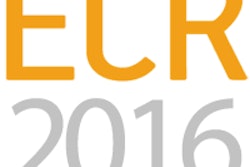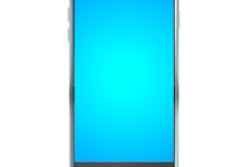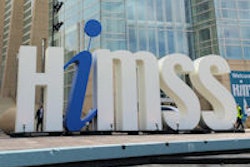
CHICAGO - Healthcare organizations are increasingly using mobile technologies to engage with patients, but those efforts haven't always been effective, according to results from the 2015 HIMSS Mobile Technology Survey presented at this week's Healthcare Information and Management Systems Society (HIMSS) meeting.
Nearly 90% of survey respondents indicated that mobile devices are used in their organization to engage patients. However, much lower percentages of respondents said that these technologies were considered to be highly effective. While 73% were using app-enabled patient portals, for example, only 36% of those respondents indicated that the portals were highly effective.
HIMSS Analytics received 238 responses to this year's Web-based survey, which was performed in January and February 2015. To participate in the survey, individuals had to have some role involving mobile technology in their organization, said Jennifer Horowitz, senior director of research, who presented the results.
When respondents were asked to rate the maturity of their organization's mobile technology environment on a scale of 1 (immature) to 7 (mature), the average score exceeded 4 for the first time, Horowitz said.
"We find that every year we ask this question -- and this is our fourth year -- the respondents are feeling like their technology environment is a little more robust," she said. "So that's really good news."
Respondents were also asked to rate the priority level of mobile devices for IT leadership at their organization on a scale of 1 (not a priority) to 7 (high priority). The average score was around 5, which is considered a fairly high priority, Horowitz said.
The researchers also found that 57% of respondents had a mobile technology policy and 36% are currently developing a policy. These policies tend to cover issues such as managing lost and stolen devices, security, and whether the organization has a bring-your-own-device (BYOD) policy in place, she said.
The most popular mobile technologies were the following:
- App-enabled patient portals: 73%
- Telehealth services: 62%
- Texting to patients: 57%
- Remote patient monitoring: 49%
Among the organizations using mobile technologies for telehealth services to engage with patients, only 27% considered the strategy to be successful. In addition, only 27% of respondents said that texting to patients was an effective, successful strategy. Approximately 20% of those using mobile remote patient monitoring reported that it was an effective approach.
App-enabled patient portals and telehealth services are the top two technologies that organizations are continuing to leverage, Horowitz noted.
"So I think they're starting to see some really good traction with these types of technologies, and they're planning on moving forward with it in the future," she said.
When asked how valuable mobile technologies were going to be for their organization in the future, 83% indicated they would be a very high priority.
Healthcare organizations are also going to be focusing on apps, Horowitz said.
"We found that in the current [mobile technology] policies that healthcare organizations have in place, only about half currently have a strategic level of direction that's provided in their policy," she said. "We found that 62% of respondents are going to be focusing on app use in the future."
Thirty-one percent of respondents said their institution has an organizational-specific mobile app for patients; an additional 30% are currently developing such an app. About half of those who plan to develop their own apps in the future are going to use outside companies to develop them, while about 13% are going to rely on internal staff.
"There are a lot of opportunities here for [the remaining approximately 40% of] healthcare organizations to look at apps and how they might fit into their patient engagement strategy," Horowitz said.
In other results, 52% of respondents said that some of their data from remote devices, such as from blood pressure cuffs, are being integrated into their electronic medical record (EMR) at this time. Eight percent said they had integrated all of their data into their EMR, while another 6% said they had integrated about 75% to 99% of their data.
"That leaves a really wide range of opportunity for healthcare organizations to make sure that they are creating a strategy to integrate that data into their environment," she said.
Facilitating data outreach
Regarding the types of mobile technologies used to facilitate data outreach, healthcare organizations were most likely to have a SMS texting solution to make data available to providers and clinical staff, according to Horowitz. Twenty-four percent of respondents are using a unified communication system, while 27% are using a pager replacement system.
"SMS texting is the lead type of technology that organizations are going to be using in the future," she said. "We saw 37% using it, and another third are going to be leveraging or expect to be leveraging that type of technology at their organizations going forward."
Approximately 54% of respondents said they had achieved cost savings from using mobile technologies. Twenty-four percent said they had been able to improve preventative support care, i.e., wellness management.
The survey also found that about 22% reported cost savings from using mobile technologies for telehealth, such as for remote intensive care units, teleneurology, or teleradiology programs.
Also, 21% reported cost savings from mobile technologies for supply chain management, and 20% of respondents said they received value across the care continuum, Horowitz said.
Fourteen percent of facilities reported financial benefits from using mobile technologies for remote patient monitoring, she added.




















